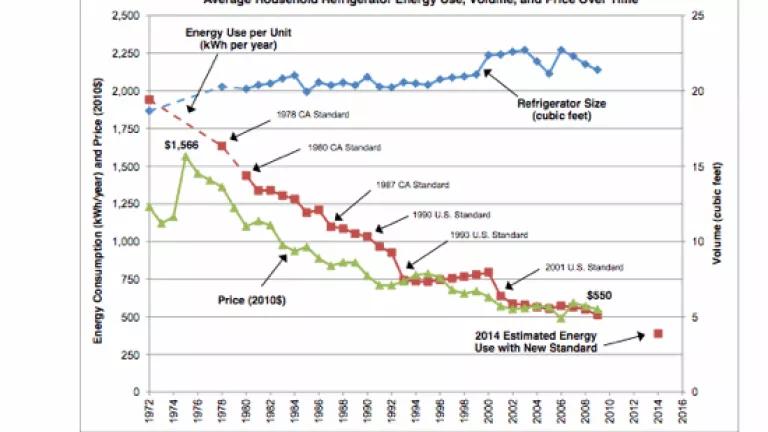New Refrigerator Standards Will Keep Food Cool, While Helping Keep the Lights -- and A/C -- On

As the dog days of summer continue to wear on, nothing sounds better on a hot afternoon than an ice-cold popsicle straight out of the freezer. Well thanks to new standards issued by DOE, refrigerators will continue to keep our popsicles cold, while using about 25 percent less energy. These standards will save consumers a net of up to $36 billion dollars cumulatively over the next 30 years and save almost 5 quads over the same time period – about 5 percent of total US annual energy use. They will also reduce the overall strain on the grid by eliminating the need for 4.8 Gigawatts of generation capacity by 2043, helping keep the lights and A/C on. Reducing peak load on the grid is most important on particularly hot summer days like the ones we’ve had in recent weeks when the grid is at full capacity and when keeping it in service is most critical for sensitive populations, such as the sick and elderly.
Overall, standards issued by DOE to date have significantly reduced energy use in the US: in 2010, they reduced US electricity use by approximately 7 percent in 2010. Standards for refrigerators have continually contributed heavily to this success. The first refrigerator standards were set by California in 1976 and subsequent state and federal standards have driven continued improvements thathave led to refrigerators that use a quarter of the energy they used 40 years ago (when they were smaller and many did not even defrost automatically). After the new standards are implemented, refrigerators will be even more efficient, using approximately a fifth of the energy of their avocado green ancestors. The continued success of refrigerator standards show how, as my colleague David Goldstein blogs about, energy efficiency truly is the low hanging fruit that grows back.
Before the first standards for refrigerators were set, their size, feature set, and energy use had grown continually for decades. Despite the fact that the technology existed to make them more efficient – and to save consumers significant money on their energy bills – this technology wasn’t implemented. Why didn’t the market correct this on its own? There are several reasons. Efficiency is hard to see, making it difficult for consumers to demand. Additionally, the person buying the fridge is often a builder or landlord who will never pay a single energy bill, giving them no reason to buy the efficient version, especially if it costs a little more up front. Finally, even if they will pay the bill, consumers often only look at the initial price of a product without realizing that the increased energy bills over time will add up to much more than that initial cost difference. All of these barriers lead to a market that does not readily encourage energy efficient options on its own.
Standards help overcome these barriers by creating a market for energy efficiency. The result has been refrigerators that are bigger, cheaper, and have more features and options then fridges of the past – all while using more than 80 percent less energy. Figure 1 illustrates this: refrigerator energy use has continually declined due to standards, while fridge size has continued to increase and price to decrease. Yet there are still further gains to be made as evidenced by DOE's newly issued rule, which is widely supported by a range of stakeholders, including appliance manufacturers, consumer groups, and environmental and efficiency advocates . It’s a nice change from the typical state of things in DC these days, where there doesn’t seem like much that anyone can agree on.
So while DC and the rest of the country continue to try to beat the heat, we can rest assured thanks to standards that our fridges are keeping our popsicles cold without breaking the bank on our energy bills and that the fridges of the future will be even more efficient.
